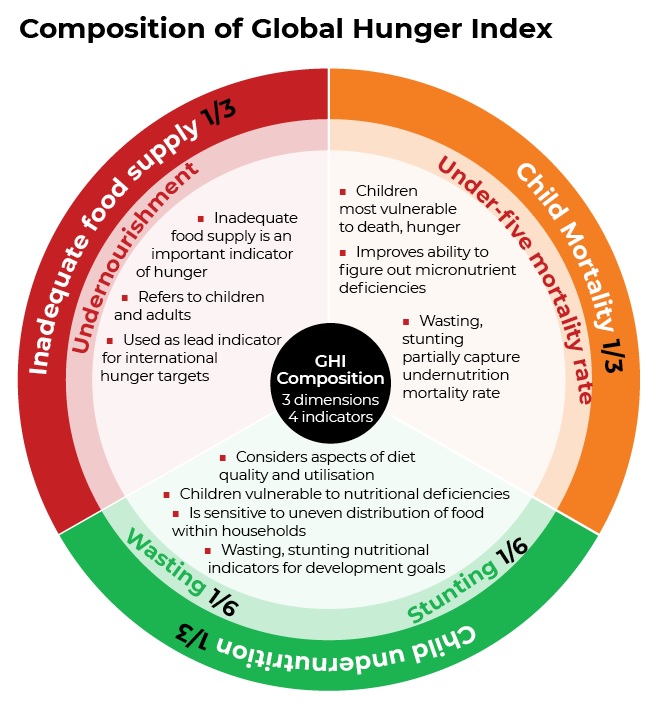The Global Hunger lndex 2021 report, prepared by 'Welthungerhilfe' and 'Concern Worldwide,' was released recently.
|
Indicators |
Definition |
|
Undernourishment |
Share of the population that is undernourished i.e., whose caloric intake is insufficient |
|
Child wasting |
Share of children under the age of 5 who are wasted (low weight for their height), reflecting acute under-nutrition |
|
Child stunting |
Share of children under the age of 5 who are stunted (low height for their age), reflecting chronic under-nutrition |
|
Child mortality |
Mortality rate of children under the age of 5 (partly, a reflection of mix of inadequate nutrition and unhealthy environments) |

Reference
|
Area |
Funding Pattern |
|
North Eastern & Himalayan States |
90% Central share and 10% State share |
|
Other States |
60% Central share and 40% State share |
|
Union Territories |
100% Central share |
Reference
|
Area |
Funding Pattern |
|
North Eastern & Himalayan States |
90% Central share and 10% State share |
|
Other States |
60% Central share and 40% State share |
|
Union Territories |
100% Central share |
Reference
Reference
Reference